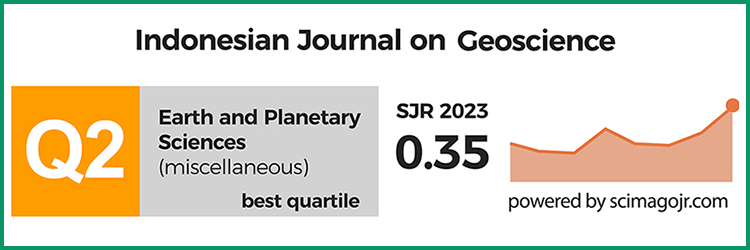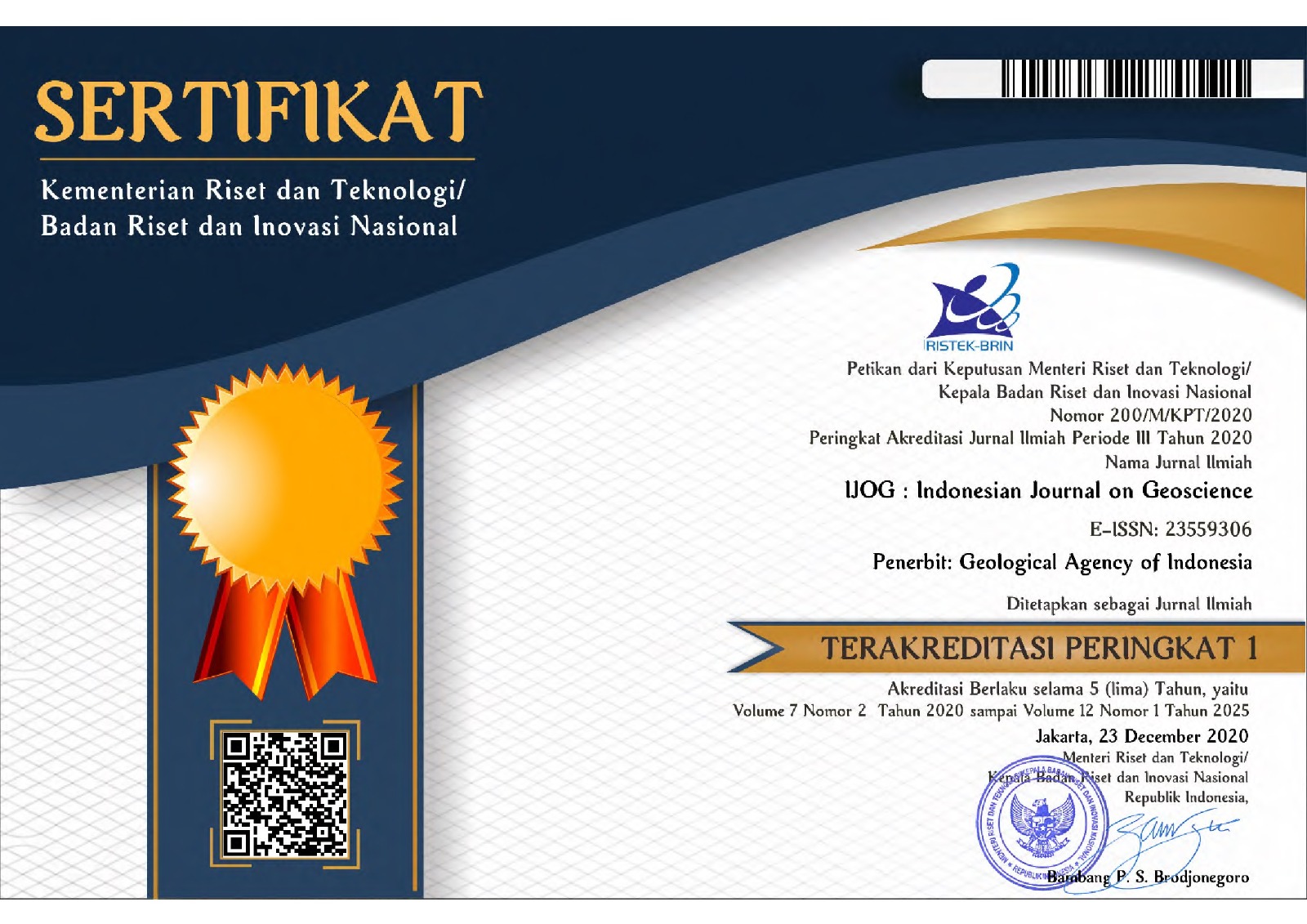A Combined Petrographic-Geochemical Provenance and Tectonic Setting Study of Palaeozoic Rocks, in East Johor Basin, Peninsular Malaysia
DOI:
https://doi.org/10.17014/ijog.8.1.11-24Keywords:
Paleozoic rocks, petrography, geochemistry, provenance, tectonic settingAbstract
DOI: 10.17014/ijog.8.1.11-24
Several greywacke sandstones considered as Paleozoic rocks are found in three different formations, i.e. the Dohol, Linggiu, and Tanjung Leman Formations within the Palaeozoic East Johor Basin. The compositions of twenty-nine sandstone samples were identified using petrographical and geochemical methods to determine the provenance of sandstones as well as the tectonic setting of pre-and syn-sedimentation. Seven samples of them were examined using point counting method to obtain the mineralogical compositions. This petrographical point counting was done by plotting composition percentages to QFL and QmFLt triangular diagrams, The results showed a magmatic arc for Dohol Formation, a change from a magmatic to a recycled orogen for Linggiu Formation, and a recycled orogen for Tanjung Leman Formation. The recycled orogen tectonic setting of Linggiu and Tanjung Leman may have come from the underlying metamorphic and sedimentary rocks of Mersing and Murau Formations. Meanwhile, twenty-two samples were examined using a geochemical method by utilizing the ratio of K2O/Na2O and SiO2. The samples suggest a tectonic setting from both passive continental margin (PM) and active continental margin (ACM). Based on these findings, it is interpreted that the sedimentary rocks in East Johor were deposited in a subduction-related basin, such as fore-arc, magmatic arc, and back-arc.



















